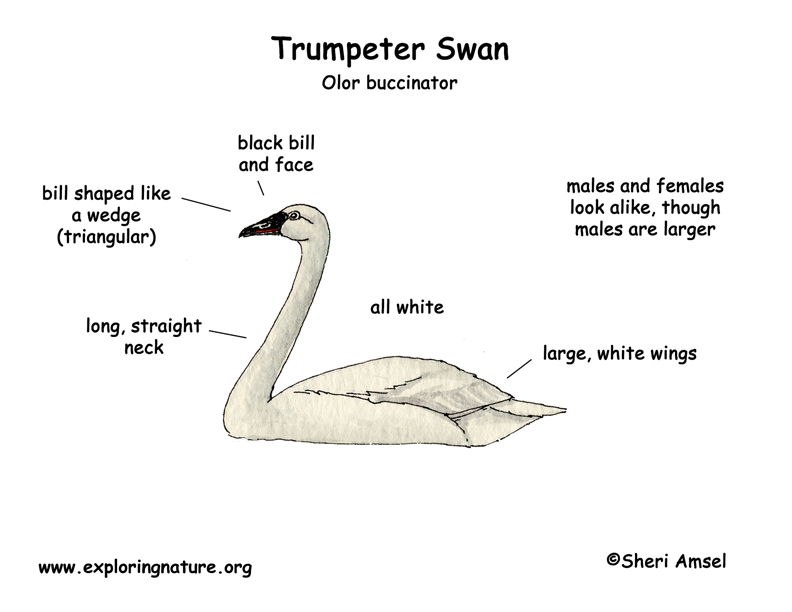

They live year round in small areas in central Alaska and western Canada, and in some northern middle states in the U.S., like Nebraska, Minnesota, Wisconsin, and Michigan. In the winter they can be found in some U.S. northwestern states.
They live on freshwater marshes, ponds, lakes and reservoirs.
They are the largest water bird of North American waterfowl. They are all white with a black bill and face. They have a long neck. Males and females look alike, though males are larger.
They often (but not always) mate for life and if they lose a mate, they will not mate again. They can live for 25 years in the wild. They were hunted almost to extinction in the 1900s, but have recovered in numbers today.
They eat water plants, grasses, and grains.
They build a large, open bowl, nest high up and surrounded by water. It is made of water plants and grass, and lined with down and feathers. Females lay 1- 9 white eggs.
Domain: Eukarya
Kingdom: Animalia
Phylum: Chordata
Subphylum: Vertebrata
Class: Aves
Order: Anseriformes
Family: Anatidae
Genus: Cygnus
Species: C. buccinator
When you research information you must cite the reference. Citing for websites is different from citing from books, magazines and periodicals. The style of citing shown here is from the MLA Style Citations (Modern Language Association).
When citing a WEBSITE the general format is as follows.
Author Last Name, First Name(s). "Title: Subtitle of Part of Web Page, if appropriate." Title: Subtitle: Section of Page if appropriate. Sponsoring/Publishing Agency, If Given. Additional significant descriptive information. Date of Electronic Publication or other Date, such as Last Updated. Day Month Year of access < URL >.
Amsel, Sheri. "Swan (Trumpeter)" Exploring Nature Educational Resource ©2005-2024. December 14, 2024
< http://www.exploringnature.org/db/view/Swan-Trumpeter >

